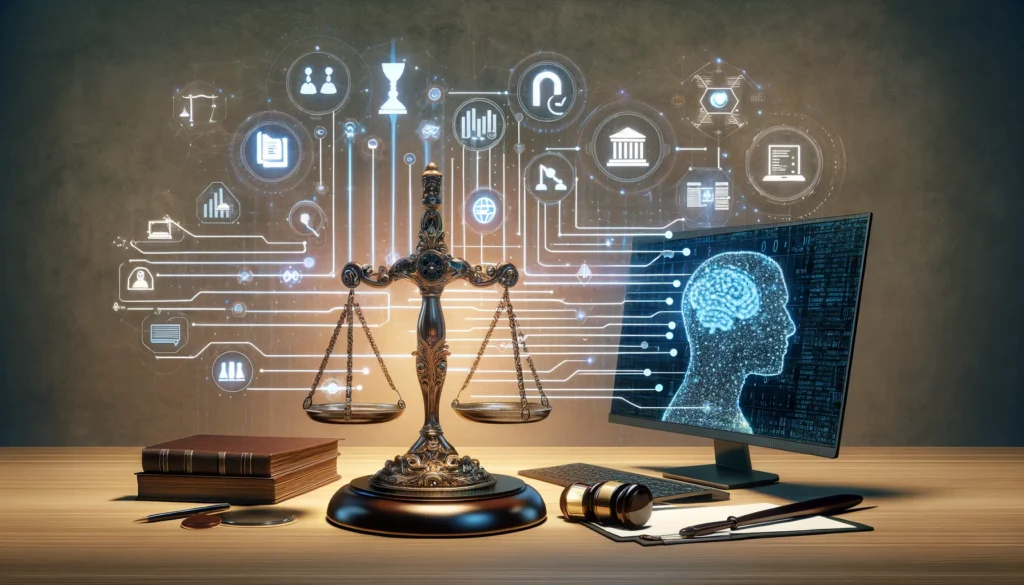
Crafting the Blueprint: The Importance of Robust Document Retention Policies
In the legal landscape, maintaining a comprehensive document retention policy is pivotal to ensuring compliance, mitigating risks, and increasing operational efficiency. Document retention policies offer a structured approach to managing and disposing of records across the corporate spectrum.
Overview of Document Retention Policies: Document retention policies outline the processes and procedures for managing records from creation to eventual disposal. These policies ensure that corporations retain necessary documents for regulatory compliance and dispose of them securely when no longer needed.
Why Effective Retention Policies Matter: Effective document retention policies are crucial for legal compliance, reducing storage costs, and protecting sensitive information. They help in safeguarding against potential legal liabilities and streamline information retrieval processes.
However, paralegals face various challenges such as managing large volumes of documents, identifying critical records, and ensuring that retention policies are consistently applied. These demands often divert focus from higher-value tasks and risk non-compliance due to human error.
Incorporating AI tools such as ChatGPT can revolutionize this aspect. Let’s delve into what ChatGPT offers and how it pertains to paralegals.
AI Allies: An Introduction to ChatGPT and Large Language Models (LLM)
As AI continues to evolve, tools such as ChatGPT are becoming indispensable in numerous corporate settings.
What is ChatGPT? A Brief Primer: ChatGPT is an advanced language model developed by OpenAI. It’s designed to understand and generate human-like text, making it a powerful ally for various tasks, including document management.
The Evolvement of LLMs in Corporate Settings: Large Language Models (LLMs) like ChatGPT have shown tremendous potential in automating and optimizing administrative tasks, increasing productivity, and providing deep insights through data analysis.
The Potential of LLMs in Paralegal Tasks: Paralegals can leverage ChatGPT to automate document classification, generate summaries, and ensure compliance with retention policies. With its advanced language processing capabilities, ChatGPT can handle complex queries and offer actionable recommendations.
Understanding how to interact with ChatGPT effectively can make a significant difference. Let’s explore smart prompting techniques to maximize output.
Smart Prompting: Crafting Questions that Yield Actionable Insights
One of the most critical aspects of using ChatGPT efficiently is designing the right prompts. Properly crafted prompts can significantly enhance the quality of the responses.
Designing the Perfect Prompt: Dos and Don’ts:
- Do: Provide clear and specific instructions. Example: “List key compliance requirements for document retention in the healthcare industry.”
- Don’t: Use vague prompts. Example: “Tell me about document retention.”
Creative Prompt Strategies for Document Retention:
- Use case-based scenarios: “How should a law firm handle the retention of emails related to client litigation?”
- Ask for comparative analysis: “Compare the document retention policies of financial institutions versus tech companies.”
- Seek compliance checks: “What are the risks of not adhering to document retention policies in the pharmaceutical sector?”
Optimizing Queries for Precision and Relevance: Ensure your queries are precise and focused on specific tasks. For instance, instead of asking, “Help with document retention,” ask, “What is the recommended retention period for financial records in a public company?”
Having mastered smart prompting, let’s see how you can apply ChatGPT for hands-on document retention tasks.
Hands-on Techniques: Using ChatGPT to Optimize Document Retention Tasks
With a solid understanding of prompting, ChatGPT can be utilized in various hands-on document retention tasks to bolster efficiency and accuracy.
Automating Routine Document Classification: Use ChatGPT to classify documents based on predefined categories. For instance, you can upload a batch of documents and prompt ChatGPT to organize them into categories such as “financial,” “HR,” “legal,” and “operational.” This step automates what is often a cumbersome manual process.
Generating Summaries and Reports in Seconds: ChatGPT can quickly summarize lengthy documents and generate comprehensive reports. For example, you can input a compliance report and ask ChatGPT to summarize the key points and recommendations. This capability saves considerable time and ensures that essential information is highlighted effectively.
Ensuring Compliance and Identifying Red Flags: Use ChatGPT to audit document retention practices and flag any inconsistencies. For example, prompt ChatGPT with, “Audit the following document retention practices for compliance with GDPR regulations.” The model can identify areas of risk and suggest remedial actions.
To maximize these functionalities, seamless integration into daily workflows is key.
Seamless Integration: Embedding ChatGPT in Daily Workflow
Effective integration of ChatGPT into daily workflow practices involves several steps to ensure smooth operation and optimal utility.
Workflow Automation: Tools and Tips: Utilize tools like Zapier to integrate ChatGPT with your existing workflow applications. Automate tasks such as document classification and report generation to free up valuable time.
Integrating ChatGPT with Existing Software: Use API integrations to connect ChatGPT with your Document Management System (DMS) or Customer Relationship Management (CRM) tools. This ensures that ChatGPT can access and assist with data across your systems seamlessly.
Maintaining Security and Confidentiality: Ensure data encryption and secure handling practices to maintain client confidentiality. Implement role-based access controls and regularly audit interactions with ChatGPT to uphold data integrity and security.
Beyond daily workflows, boosting team collaboration is equally crucial.
Boosting Collaboration: Enhancing Team Efforts and Communication
ChatGPT’s capabilities extend to enhancing team collaboration and communication within the corporate environment.
Facilitating Team Brainstorms and Discussions: Use ChatGPT to facilitate structured brainstorming sessions. Prompt it with, “Generate ideas for improving our document retention policies” to kickstart productive discussions.
Document Sharing and Feedback Loops: Enable team members to share documents via ChatGPT and receive instant feedback. For instance, prompt, “Review this document for compliance concerns and provide feedback.”
Advanced features further unlock even greater potentials. Let’s explore how.
Unlocking Advanced Features: Leveraging APIs and Custom Models
For corporations looking to fully harness ChatGPT, integrating advanced features unlocks substantial capabilities.
Introduction to API Integration: APIs allow seamless integration of ChatGPT into existing systems. They enable custom applications and functionalities tailored to specific corporate needs.
Customizing ChatGPT for Specific Corporate Needs: Tailor ChatGPT responses to fit your corporate language and requirements. For example, train custom models to align with industry-specific jargon and compliance needs.
Cost-Benefit Analysis of Advanced Customization: Conduct thorough evaluations to justify the investment in advanced features. Weigh the enhanced functionality and productivity gains against the associated costs to determine ROI.
Staying abreast of AI advancements ensures continued effectiveness.
Future-Proofing: Staying Ahead in the AI Technology Curve
As technology evolves, it’s crucial to stay updated on AI developments and continuously refine strategies.
Monitoring AI Developments and Updates: Regularly follow updates from AI research bodies and implement relevant advancements. This ensures your AI tools remain cutting-edge.
Continuous Learning and Adapting Strategies: Foster a culture of continuous learning within your team. Regular training on new features and adaptations ensures optimal use of AI tools like ChatGPT.
As AI continues to redefine corporate document retention frameworks, the synergy between human expertise and artificial intelligence will undoubtedly herald an era of unparalleled efficiency and compliance. The time for proactive adoption is now.


